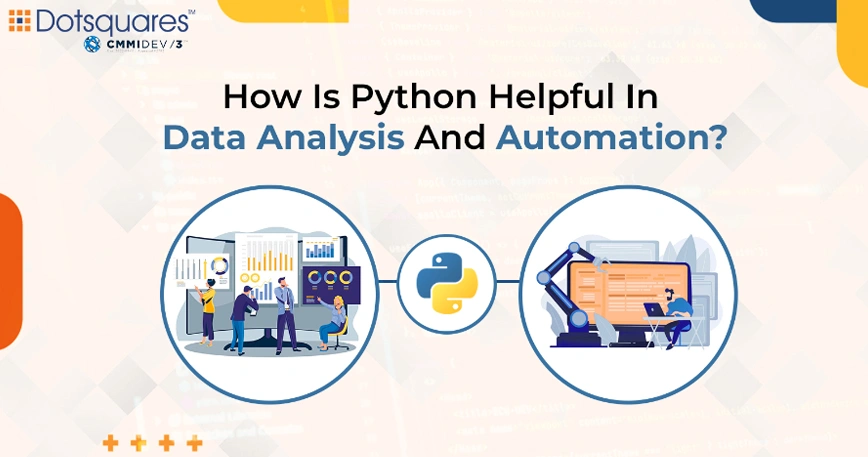


From simply collecting the data to driving key business decisions based on the insights - data science has changed a lot in its meaning. Also, when it comes to data science and analysis, the two widely discussed terms are automation and machine learning. Data scientists carry out analysis with the help of automated machine learning and deep learning models to simplify complex processes, calculations, and functions.
Python has an extensive set of libraries with machine learning capabilities that specialise in data collection, analysis, visualisation, and real-time update and sharing of information. These libraries are single handedly efficient, eliminating the need for Python developers to code from scratch, freeing up a significant chunk of their time to work on the ideas and make solutions even better. This makes Python the best choice for developers as well.
Python libraries and frameworks are used in the combination of automation and machine learning together, known as AutoML (Automated Machine Learning).
Automation and machine learning are two different aspects of working with algorithms and Artificial Intelligence. While automation replaces human efforts in accomplishing a task, machine learning allows computers or any other device to take inputs from humans and perform accordingly.
Talking specifically about data science and analysis, Python is an acclaimed programming language used to achieve the goals of automating several processes or facilitating machine learning and deep learning capability with regard to data collection.
For business analytical applications, Python helps in creating solutions that assist in preserving data in a set format, supports automation, and helps businesses and data analysts equally to conduct predictive analysis of the data. For data-centric businesses of today, AutoML is their true asset.
Exploratory data analysis is the technique of data exploration to understand several aspects of the data. A crucial step before conducting any machine learning or deep learning task.
Data scientists carry out exploratory analysis to explore, identify potential loopholes and sum up the fundamental capabilities of the data. Exploratory data analysis is persistent on information sources to ensure appropriate responses in a set format. This helps data scientists to find information patterns, spot loopholes/dead ends, and test speculations.
Data is invited from several sources - from the web, smartphones, web-empowered gadgets, and IoT sensors. Although the flexibility of data collection sources has made consumers give instant responses, this has given rise to a large data set. But the explosion of data is not enough until there is a way to scrutinise the entire for proficiency and profitability.
As a matter of fact, more than 60% of the time allotted to data science projects goes into data collection, data analysis, feature selection, feature engineering, etc. As ‘data’ is a crucial part of the entire workflow. Because data is valuable - more importantly, sorted data is valuable, there are a lot of activities like cleaning the data, handling missing grids, handling outliers, and more - as important as they are tedious.
Several Python-based libraries like Pandas, NumPy, Keras, TensorFlow, AutoViz, etc., if integrated into the project, can automate the tasks to exponentially save time and effort.
It is near impossible to find a perfect match as Python for Data Sciences. One single language that helps in automating the tasks as well as helps with descriptive, predictive, and perspective analysis.
Python is a general-purpose language and not dedicated solely to data analysis. Python development companies must hold the expertise to make the best data science solutions paving the way for success through data.
Python is the best choice for data science and business analytical tools. Leveraging AI capabilities like automation and machine learning can make the solutions more advanced and quick. Data scientists love Python because of its immense capabilities and the value it brings to the table.
Explore the immense potential of Python in data science, business, and analytical tools with guidance from Certified Python Experts at Dotsqaures. Let’s talk about your requirements.
Free AI website builders sound great, but the hidden limits, risks, and long-term costs can hurt your business. Learn the truth before you build your next website.
Keep ReadingDiscover 2025’s top digital marketing trends AI, voice search, video, personalization & ethical branding. Stay ahead with Dotsquares’ expert solutions.
Keep ReadingDiscover how Dotsquares elevate modern social media marketing with tailored SMM strategies that boost engagement, build trust, and drive business growth.
Keep Reading